Cooler Master MasterKeys Pro L and MasterKeys Pro S Reviews
March 15, 2016 | 09:02
Companies: #cooler-master

A 72MHz 32-bit ARM Cortex M3 processor and 512KB of memory are included for storing and playing back custom macros, which are programmed on the fly. In any of the custom profiles, FN and F11 enters recording mode, at which point all available keys light up blue while those with macros already assigned go red – virtually all are usable. You then select a key, record your inputs (there's no obvious limit), and select a playback mode with one of the three keys immediately to the left of the F-row. You can playback once, play until the key is pressed again or run the macro only while the key is held. Delays are recorded as they're input, with no way of changing this, so it's not the most advanced macro feature you'll find, but it is very intuitive and you can still store hundreds across all the profiles if you wish. The keys light up as they're playing back too, and macros will continue to play as you input other commands.
You can also customise the RGB lighting, and it might surprise you how easy it is to do so. FN and F4 cycles through the various patterns and modes, including various wave, static and reactive effects as well as fancier and sillier ones like being able to play Snake on the keyboard with the arrow keys – prepare to take procrastination to a whole new level. In most modes, you can control the colour using FN and F1, F2 and F3, which represent the red, green and blue channels respectively. Each has ten different brightness levels (including off), and when you're editing the three keys light up to their current setting to help you out. You can mix and match these levels to form most basic colours. You can also create your own per-key pattern. In this mode, the FN key will light up in the currently select colour, and you then tap any keys you want in that colour.
The lighting quality is also excellent here. Whites are very convincing, not leaning too heavily to any of the three channels, but really whatever effect and colour you use the effect is very captivating. The reflective plate and powerful LEDs create a very strong and even glow through the keys but especially between them, which really adds to the smoothness of transitions and fades. The lighting of dual character keys still isn't totally even, but it isn't a jarring difference and overall it's fantastic.
Despite the two keyboards being very powerful, all their secondary functions are very easy to use thanks to the keycaps having clear symbols printed on them. The downside is that these won't be there if you want to replace them, but this isn't something most users will do
While the MasterKeys Pro L and MasterKeys Pro S are both highly capable as plug and play devices, Cooler Master has produced some software to complement them. All this really does is allow for the fine tuning of the LED effects, updating of the firmware and importing, exporting and sharing of your lighting profiles. The company is also working on and planning to release an SDK for both keyboards for further customisation.
The software has a slight delay when opening or applying settings, but otherwise we have few complaints. The Lighting tab lets you customise or just disable each of the 13 lighting modes in all four profiles. You can change the colour as well as the speed of the effect, where applicable, and that's pretty much it. Two of the modes are unique to the software. The first is System Status, which uses the lights to represent an equaliser of system sound or CPU load. The other is Multilayer, allowing you to have four different effects active at one time. Note, however, that you can only have one effect per key, so you couldn't have a key be part of a wave pattern but also reactive when you hit it.
Update: Since publishing this review, Cooler Master has been in touch to inform us that it miscommunicated the MSRPs for both keyboards. The actual MSRPs including VAT are £129.99 for the MasterKeys Pro L and £109.99 for the MasterKeys Pro S, instead of £109.99 and £89.99, respectively, as originally listed. This was an internal company error which actually led to Cooler Master selling the first batch of MasterKeys Pro L keyboards at a loss to UK distributors. As far as we know, this accidental low price is going to be honoured in the first round of sales of the MasterKeys Pro L (although it's ultimately down to retailers at this stage, not Cooler Master), so if you're interested now may be a very good time to buy. The MasterKeys Pro S will hit the market at its correct price. In light of the new pricing, we have slightly amended the conclusion but we believe keyboards are still worthy of their original award.
You can also customise the RGB lighting, and it might surprise you how easy it is to do so. FN and F4 cycles through the various patterns and modes, including various wave, static and reactive effects as well as fancier and sillier ones like being able to play Snake on the keyboard with the arrow keys – prepare to take procrastination to a whole new level. In most modes, you can control the colour using FN and F1, F2 and F3, which represent the red, green and blue channels respectively. Each has ten different brightness levels (including off), and when you're editing the three keys light up to their current setting to help you out. You can mix and match these levels to form most basic colours. You can also create your own per-key pattern. In this mode, the FN key will light up in the currently select colour, and you then tap any keys you want in that colour.
The lighting quality is also excellent here. Whites are very convincing, not leaning too heavily to any of the three channels, but really whatever effect and colour you use the effect is very captivating. The reflective plate and powerful LEDs create a very strong and even glow through the keys but especially between them, which really adds to the smoothness of transitions and fades. The lighting of dual character keys still isn't totally even, but it isn't a jarring difference and overall it's fantastic.
Despite the two keyboards being very powerful, all their secondary functions are very easy to use thanks to the keycaps having clear symbols printed on them. The downside is that these won't be there if you want to replace them, but this isn't something most users will do
While the MasterKeys Pro L and MasterKeys Pro S are both highly capable as plug and play devices, Cooler Master has produced some software to complement them. All this really does is allow for the fine tuning of the LED effects, updating of the firmware and importing, exporting and sharing of your lighting profiles. The company is also working on and planning to release an SDK for both keyboards for further customisation.
The software has a slight delay when opening or applying settings, but otherwise we have few complaints. The Lighting tab lets you customise or just disable each of the 13 lighting modes in all four profiles. You can change the colour as well as the speed of the effect, where applicable, and that's pretty much it. Two of the modes are unique to the software. The first is System Status, which uses the lights to represent an equaliser of system sound or CPU load. The other is Multilayer, allowing you to have four different effects active at one time. Note, however, that you can only have one effect per key, so you couldn't have a key be part of a wave pattern but also reactive when you hit it.
Conclusion
There truly is very little to dislike with either of these keyboards. They make features which are typically convoluted and heavily reliant on software available in a simple plug and play manner. Granted, neither the macro nor the lighting capabilities are as complex as competing efforts from Razer or Corsair, for example, but sheer quality of build and design is still here in spades. We suspect there are a good number of users who like the appeal of RGB lighting in a quality mechanical keyboard but are less enamoured by bloated software packages or excessively complex macro functions. If that's you, then the MasterKeys Pro L, or the Pro S if you want to go tenkeyless, will certainly satisfy. Cooler Master's pricing is also fair in the context of the wider market, which only adds to the appeal.Update: Since publishing this review, Cooler Master has been in touch to inform us that it miscommunicated the MSRPs for both keyboards. The actual MSRPs including VAT are £129.99 for the MasterKeys Pro L and £109.99 for the MasterKeys Pro S, instead of £109.99 and £89.99, respectively, as originally listed. This was an internal company error which actually led to Cooler Master selling the first batch of MasterKeys Pro L keyboards at a loss to UK distributors. As far as we know, this accidental low price is going to be honoured in the first round of sales of the MasterKeys Pro L (although it's ultimately down to retailers at this stage, not Cooler Master), so if you're interested now may be a very good time to buy. The MasterKeys Pro S will hit the market at its correct price. In light of the new pricing, we have slightly amended the conclusion but we believe keyboards are still worthy of their original award.


MSI MPG Velox 100R Chassis Review
October 14 2021 | 15:04

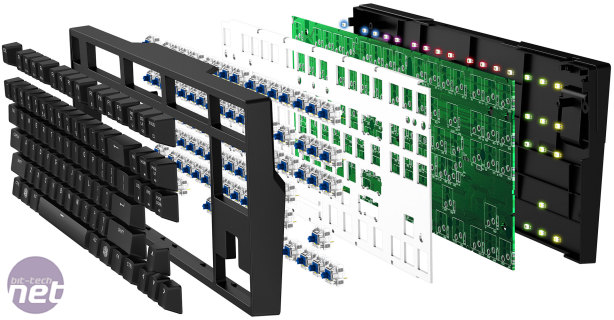
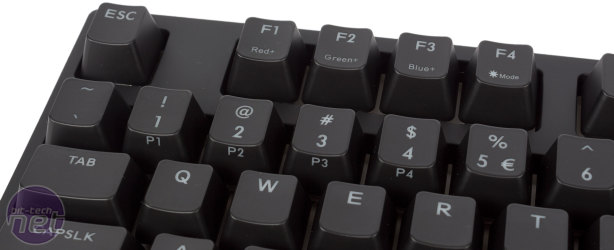
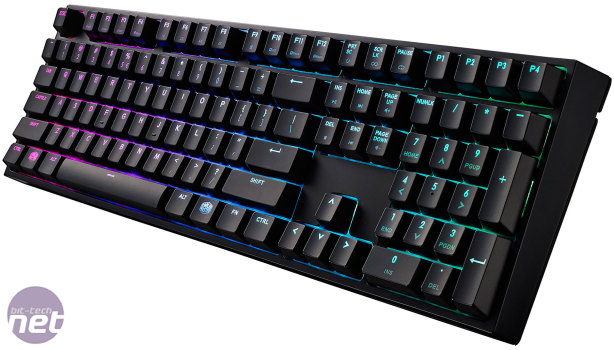
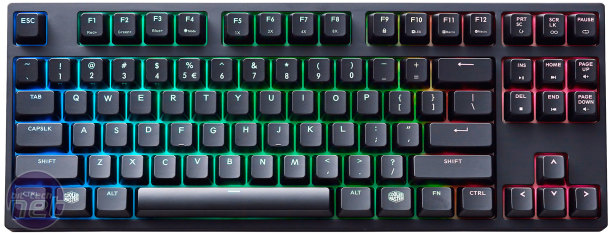
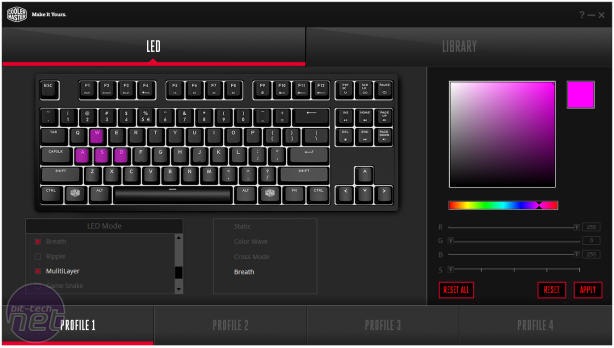
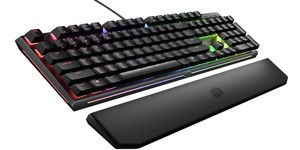






Want to comment? Please log in.